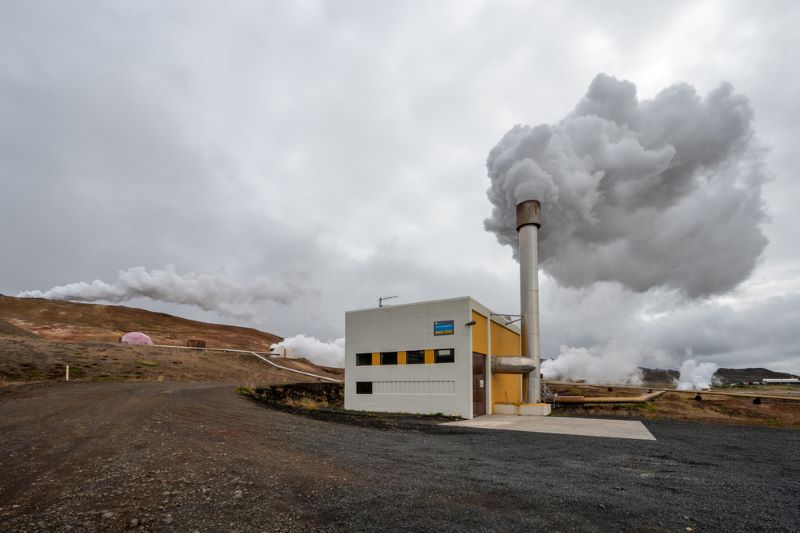Geothermal energy is energy stored in the form of heat beneath the solid surface of the Earth. Nobody doubts the benefits of renewable energy sources to reduce external energy dependence and air pollutant emissions. And this is one of them.
Humanity used this geothermal energy that the Earth provided 20,000 years ago to bathe, relax and cook food. Today, geothermal energy is used both to produce electricity in areas of the earth with high temperatures, and to heat and cool buildings, in any place, time and situation. It is an energy with a great future.
The benefits range from an alternative to fossil fuelsits versatility, low maintenance and no smoke emissions greenhouse gases. In their low temperature or surface geothermal applications (experts call it low enthalpy), especially for air conditioning with heat pumps, they allow savings of more than 40% and have enormous potential in our country. There are already more than a million installations of this type in Europe.
Types of geothermal energy
There are usually three types of geothermal energy:
- shallow geothermal energy (less than 150 m) at low temperature
- deep geothermal energy (up to 2,000 m) for heat production
- Deep geothermal energy at high temperatures (over 150ºC), according to different approaches developed and researched from the 70s:
- Geothermal energy from hot dry rocks (Hot dry rock or HDR), based on hydraulic billing and the creation of a “deep heat exchanger” that must be unobstructed periodic.
- geothermal energy from naturally fractured rocks or Hot broken rock (HFR),
- stimulated geothermal energy EGS ( Improved geothermal systemdesigned in the United States in 1970 and implemented Soultz-sous-Forêts in France as part of a European and French-German pilot project Géothermie Soultz
- Very deep geothermal energy at very high temperatures.
These three types have in common that they absorb the heat contained in the ground, as a result of pressure and, in certain cases, greater or lesser proximity to the ground. magma.
Worldwide support for this technology
During the UN Climate Conference in Paris (COP21) in December 2015, a coalition (Global Geothermal Alliance) was formed with 38 countries and more than 20 industrial partners. The idea is to join forces to increase the share of energy of this type geothermal in the global energy mix.
It was an initiative of the International Renewable Energy Agency (IRENA), which aims to achieve a 500% increase in the global installed capacity of geothermal energy for electricity production. And a 200% increase in geothermal heating by 2030, promoting technological cooperation, coordinating regional and national initiatives and facilitating investments in this type of renewable energy in energy markets.
An installation using geothermal energy in Barcelona?
Didn’t you know there is one in Barcelona? the most relevant geothermal air conditioning installations? With the support of the Institute for Energy Diversification and Savings, IDAE, one of the largest geothermal installations in Europe is active.
This is the old Hospital de la Santa Creu and Sant Pau, declared a World Heritage Site by UNESCO, transformed into an international city of collaboration and social innovation, home to several international and research organizations.
The rehabilitation had as an essential requirement the preservation of the artistic heritage of the hospital’s modernist architectural complex, consisting of 12 pavilions. And at the same time become an efficient and sustainable building complex through the installation of a renewable geothermal air conditioning system with more than 3,000 kW of thermal power, together with the most innovative systems in the field of energy efficiency.
With this installation of geothermal 292 drillings of 120 meters deep have been carried out geothermal probesresponsible for driving energy-driven heat pumps geothermal which in turn power the underfloor heating surfaces and fan coil units installed in the pavilions.

